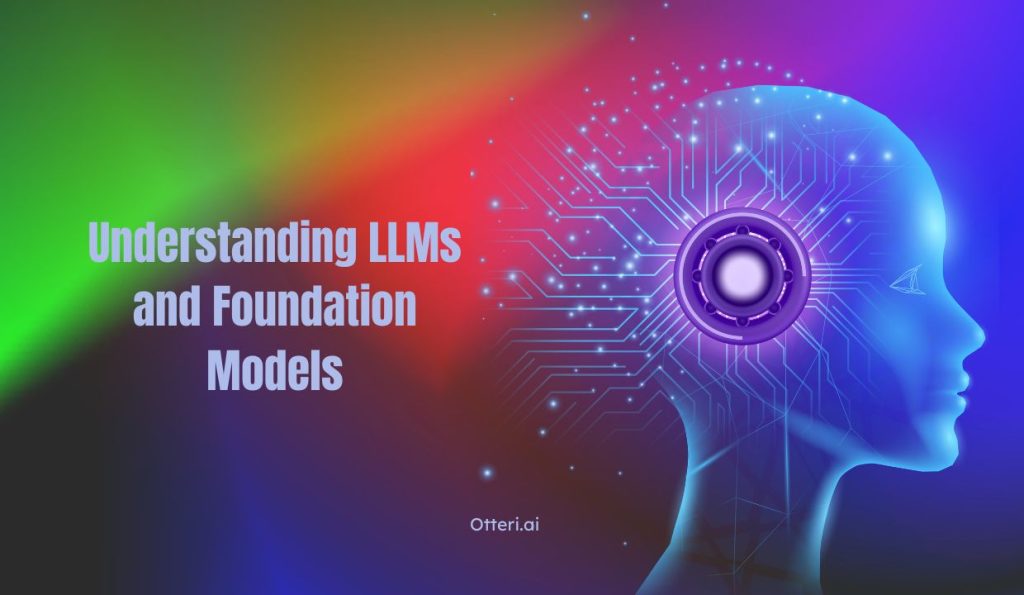
Learn how large language models (LLMs) are a subset of foundation models. Discover their differences, use cases, and impact on modern AI solutions.
Artificial intelligence (AI) has seen tremendous advancements in the past few years, especially with the rise of foundation models and large language models (LLMs). Many people often hear these terms interchangeably, but it’s crucial to understand their relationship.
In fact, large language models are a subset of foundation models — meaning every LLM is a foundation model, but not every foundation model is a language model.
In this article, we’ll break down what foundation models are, how LLMs fit into this bigger picture, and why they are critical for today’s AI-powered world.
What Are Foundation Models?
Foundation models are large AI models trained on broad, general data across various tasks.
They are designed to be adaptable — capable of performing different downstream tasks like language translation, image recognition, or even game playing, often with minimal fine-tuning.
Key characteristics of foundation models:
Trained on vast datasets (text, images, audio, etc.)
Self-supervised learning methods (no heavy manual labeling needed)
Adaptable to multiple tasks with small adjustments
Scalable and generalizable across industries
Examples of foundation models include OpenAI’s GPT models, Google’s PaLM, Meta’s LLaMA, and even multimodal models like CLIP and DALL-E.
What Are Large Language Models (LLMs)?
Large language models are foundation models specifically trained on text data.
Their primary capability is to understand, generate, and manipulate human language in a highly sophisticated way.
Key characteristics of LLMs:
Specialized in Natural Language Processing (NLP)
Can perform tasks like text completion, summarization, translation, content generation, and question-answering
Pre-trained on massive text corpora from books, websites, articles, and more
Adaptable through fine-tuning for specific applications (chatbots, legal document analysis, healthcare assistants)
Popular examples of LLMs include GPT-4, Claude, Gemini, and Mistral.
How Large Language Models Fit Into Foundation Models
Large language models are a subset of foundation models.
This means LLMs are one specialized type of foundation model that focuses exclusively on language tasks.
Other subsets of foundation models include:
Vision models (e.g., CLIP, which understands images)
Multimodal models (e.g., DALL-E, which can generate images from text prompts)
Audio models (e.g., Whisper, which transcribes and understands audio)
Thus, while all LLMs are foundation models, the reverse isn’t true: not every foundation model is a language model. Some may specialize in images, audio, or combinations of modalities.
Why This Distinction Matters
Understanding the relationship between LLMs and foundation models is important because it affects:
Technology Choice
Depending on your project (text vs. image vs. voice), you must pick the right foundation model subset.Innovation Direction
Tech companies invest heavily in foundation models that can handle multiple data types — moving beyond just language.Application Development
If you’re building a customer support chatbot, an LLM is the right choice. But if you’re developing a smart surveillance system, you need vision models.Cost and Efficiency
Foundation models can often be reused across tasks, saving costs compared to training models from scratch for each application.Use Cases of Large Language Models
Since large language models are trained extensively on human language, their applications are broad:
Customer Support Automation: Chatbots and virtual assistants
Content Creation: Blog posts, ad copies, product descriptions
Translation Services: Real-time language translation for businesses
Summarization: Turning long reports or legal documents into easy-to-read summaries
Education: Personalized tutoring assistants
Programming Help: Code completion and debugging (e.g., GitHub Copilot)
Because of their adaptability, LLMs have quickly become one of the most commercially successful types of foundation models.
How Foundation Models Are Evolving
Today, the boundaries between different types of models are starting to blur.
Many new foundation models are becoming multimodal — meaning they can handle text, images, and sometimes audio at the same time.Examples include:
GPT-4 Turbo: Can process both text and images.
Gemini 1.5: Can reason across text, images, and audio.
Claude 3: Designed to handle complex multi-input tasks.
Thus, the future of foundation models might not be neatly divided into “language” or “vision” categories but could involve more integrated capabilities.
However, even in this evolving landscape, large language models remain a crucial subset, especially for tasks that involve deep understanding and generation of human language.
Challenges and Limitations
Even though LLMs and foundation models are powerful, they come with challenges:
Bias: If the training data includes biases, the model will inherit them.
Data Privacy: Training on public datasets may inadvertently include sensitive information.
Resource Intensive: Building and fine-tuning foundation models requires massive computational power and energy.
Interpretability: Understanding why a model makes certain decisions is still a challenge (black-box problem).
That’s why ethical AI development and transparent model governance are becoming critical topics in AI conversations.
Large Language Models in the Bigger Picture
In conclusion, large language models are a subset of foundation models, specializing in understanding and generating human language.
While foundation models cover a broad range of data types (text, images, audio), LLMs focus exclusively on language tasks.As AI technology evolves, LLMs will continue to play a vital role, particularly in applications where human-like communication is essential.
At the same time, we’ll see more foundation models combining multiple abilities — making the future of AI even more dynamic and powerful.Understanding these relationships helps businesses, developers, and researchers choose the right technologies to innovate and succeed in the AI-driven world.
Ready to experience the power of AI? Explore how Otteri.ai’s intelligent tools can help your business create, automate, and grow faster. Get Started with Otteri.ai Today!